


Excellence in Research
Enclosed coastal seas such as Ariake Sea and Yatsushiro Sea are faced with numerous issues that must be solved urgently, including the deterioration of the natural environment, increased frequency of floods, tidal waves, and other disasters, depopulation, and declining birthrate and aging population. Researchers in a wide range of advanced fields have established a research center, aiming to solve such issues and create a rich natural environment and social environment. In the next three years, we will promote studies and education that focus on the restoration and creation particularly of river and coastal areas. Such studies will contribute not only to Japan, but countries in Asia and Africa that face similar problems while the local infrastructure is rapidly developing.
Background of creating a research center
Many of the studies on the preservation of the coastal environment of Ariake Sea, Yatsushiro Sea, and other areas are still at the stage of collecting basic data and surveying the local conditions, and specific studies for the restoration, creation, and sustainable use of the environment have only begun. The recovery of the environment of Ariake Sea and Yatsushiro Sea is an urgent issue, however, and the government is currently seeking specific measures for environmental improvement. At present, embankments and dams constructed in rivers and coastal areas of Japan during its high-growth period are being rebuilt or renovated. New structures to be built not only must have functions to prevent damage of natural disasters, but they must also be in harmony with the local natural and social environment. With such a background, we are adding new members to establish a research center for new academic disciplines, aiming to explain the correlations between the factors comprising the natural and social environment and people's daily lives, taking into account the nature, industry, history, culture, climate, and scenery, and create river and coastal environment that coexists with people's lives for the purpose of sound management of river and coastal environment. Research on the environmental preservation of Ariake Sea and Yatsushiro Sea is a challenge that must be addressed by Kumamoto University in the local region, and research on coastal environment is a theme for which Kumamoto University can be a global base. Further, preservation of coastal environment requires the understanding and management of watershed ecosystems that include land and rivers. In addition to the understanding of river basins and coastal environment, we aim to establish a global research base through more advanced studies such as the analysis of collected data and specific environmental restoration and creation.
Characteristics of Research
Making effective use of research data and techniques for enclosed coastal seas that have been collected and developed over the years by the conventional members of the Group for Research B, the center will work in cooperation with the central and local governments and local residents to carry out practical research on environmental improvement. This research group consists of a variety of researchers from different fields. Dr. Yasuhisa Henmi, the chief of the center, is the leader in the field of biodiversity preservation and sustainable use of water resources, and each of the members works actively for environmental preservation. The establishment of this new research center is an opportunity to develop comprehensive research that includes the vision of creating research fields that never existed before.
Research Plan
Based on the Yatsushiro Sea Restoration Project (abbreviated name) (2011 ? 2027, led by Professor Kiyoshi Takigawa, the Center for Marine Environment Studies) currently underway, the center will implement the "Survey and Research of Ariake Sea and Yatsushiro Sea" that has a new direction. This project will use regions with raid environmental changes as models, investigate ecosystems in the geosphere, hydrosphere, atmosphere, physical, chemical, and biological environment, and social environment, and implement environmental improvement based on adaptive management, aiming to acquire new large budgets. We have been surveying the condition and restoring and creating the environment at beaches, tidal flats, salt marshes of Yokoshima Reclamation, Shioya Coast, Kumamoto Port, Kazuwara Beach, the mouth of Kuma River, and other locations. From now on, we will include the mouth of Kuma River, whose environment is likely to have changed due to the removal of the Arase Dam, and Taura Bay of Yatsushiro Sea, in which hazardous pollutants have been rapidly accumulating, into our studies. We will focus on the restoration and creation of river and coastal areas in the first three years after the establishment of the center and carry out multi- and interdisciplinary joint research by the members in fields such as the Kuma River basin, from which the Arase Dam is being removed, and Shimoshima in Amakusa where renewal of embankments has become an issue.

Members
- Henmi, Yasuhisa (leader)
-
Chief of the Center, professor, Center for Marine Environment Studies
Ecological, behavioral, and fishery studies on zoobenthos in tidal flats and shallow seas- Reproduction and ecology of zoobenthos (Crustacea, bivalves, lancelets, etc.)
- Behavior and ecology of Crustacea (sand crabs, etc.)
- Preservation of coastal areas, particularly the biodiversity of tidal flats and salt marshes and effective use of them
- Recovery of resources for bivalves (clams, pen shells, etc.) and resource management
- Activities as a member of the central and local governments
- Nakata, Haruhiko (sub-leader)
-
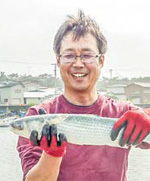
Associate Professor, Graduate School of Science and Technology (Faculty of Science)
Survey and research on chemical substances and the environment- Research on hazardous chemical pollution and bioaccumulation in enclosed water areas
- Development of assessment systems for chemical inflow load and long-term risk due to large natural disasters
- Investigation of the mechanism of ground water pollution using soluble and refractory substances as tracers
- Environment research in other countries such as Vietnam, the Philippines, and Myanmar
- Social activities at local governments, etc.
- Takio, Susumu.
-
Professor, Center for Marine Environment Studies
Stress resistance mechanism of cultured laver and tidal flat plants and analysis of useful bacteria adhere to seaweed- Mechanism of response to environmental stress of cultured laver (Pyropia yezoensis)
- Analysis of stress control genes of Saltwort (Suaeda maritima)
- Analysis of useful bacteria adhere to seaweed bed seaweed (eelgrass) and cultured laver
- Akimoto, Kazumi.
-
Associate professor, Center for Marine Environment Studies
High precision analysis of water and bottom environment: three-dimensional visualization of environmental information using audio equipment and robots- Restoration of early modern to current environment using fossils analysis of human effect
- Analysis of environmental transition in extreme disasters
- Three-dimensional analysis of the environment in enclosed bays
- Shimanaga, Motohiro
-
Associate professor, Center for Marine Environment Studies
Understanding the effect of changes in sea floor environment on meiobenthos community- Assessment of the effect of nesting holes of large benthos on meiobenthos
- Assessment of the effect of oxygen-deficient water masses on the sea floor environment and biotic communities
- Research on meiobenthos communities in hadal zones and areas around hydrothermal eruptions
- Other
* Meiobenthos: microscopic benthic organisms of 0.031 ? 1 mm in size
They include smallest multicellular animals such as Nematoda and Harpacticoida. Used for environmental assessment.
- Morimura, Shigeru
-

Associate Professor, Graduate school of Science and Technology (Faculty of Engineering)
Research on environmental assessment and cleanup using microbial functions- Investigation of element cycle functions
- Investigation of denitrification mechanism of ground water
- Development of microbial decomposition system for environmental pollutants
- Research on the relationship between food functionality and microbes
- Iwasaki, Takehiko
-
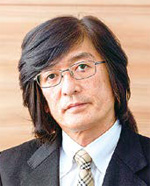
associate professor, the Memorial Museum of the Fifth High School
Research on life and culture of period after the high economic growth- Research on courtesy culture in modern society
- Research on material culture related to daily life
- Research on life lifestyle culture seen in historical pictures
- Study on Kunio Yanagita
- Tanaka, Naoto
-
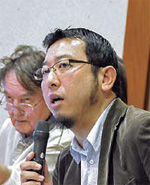
Associate Professor, Center for Policy Studies
Practical studies for policy development concerning disaster control and environment and scenery protection in public space design and community development- Research on the development of standards for the scenery of farming and fishing villages
- Research on community asset management in urban areas
- Research on the history of waterfront urban development in microtopography
- Case studies of development of attachment to infrastructure
- Research on the process of developing local identity through participation
- Hoshino, Yuji
-
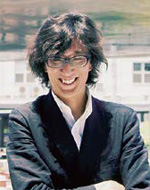
Associate Professor, Graduate school of Science and Technology (Faculty of Engineering)
Scenery and urban design for creating new possibilities for social infrastructure- Scenery design that creates the appeal of the characteristics of civil engineering facilities
- Urban design that creates various places for people to stay in the town
- Space design that creates various meanings and functions
- Exploration based on scenery theory to seek the meaning of scenery experience
- Historical examination of the process of developing social infrastructure facilities
- Minagawa, Tomoko
-
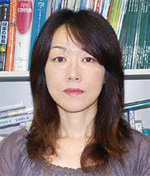
Associate Professor, Graduate school of Science and Technology (Faculty of Engineering)
Research on the preservation and restoration of river environment- Research on the river development (neo-natural river reconstruction) and nature restoration that takes into account ecosystems
- Research on the techniques of preserving flood-plain dependent species
- Investigation of the effect of geology and geological structure on river structures and ecosystems
- Investigation of the effect of man-made reforms on river ecosystems and restoration techniques
- Environmental education: Create rivers that become the assets of the local residents!
- Activities as a member of the central and local governments
- Contact
-
- Center for Water Cycle, Marine Enviroment and Disaster ManagementMarine Science Laboratory
-
2-39-1 Kurokami, Chuo-ku, Kumamoto-shi, 860-8555 JAPAN
Kumamoto University Kurokami South Campus Kurokami South C7 (Academic Commons Kurokami Bldg. 3) 612- TEL
- +81-96-342-3498+81-96-342-3498






